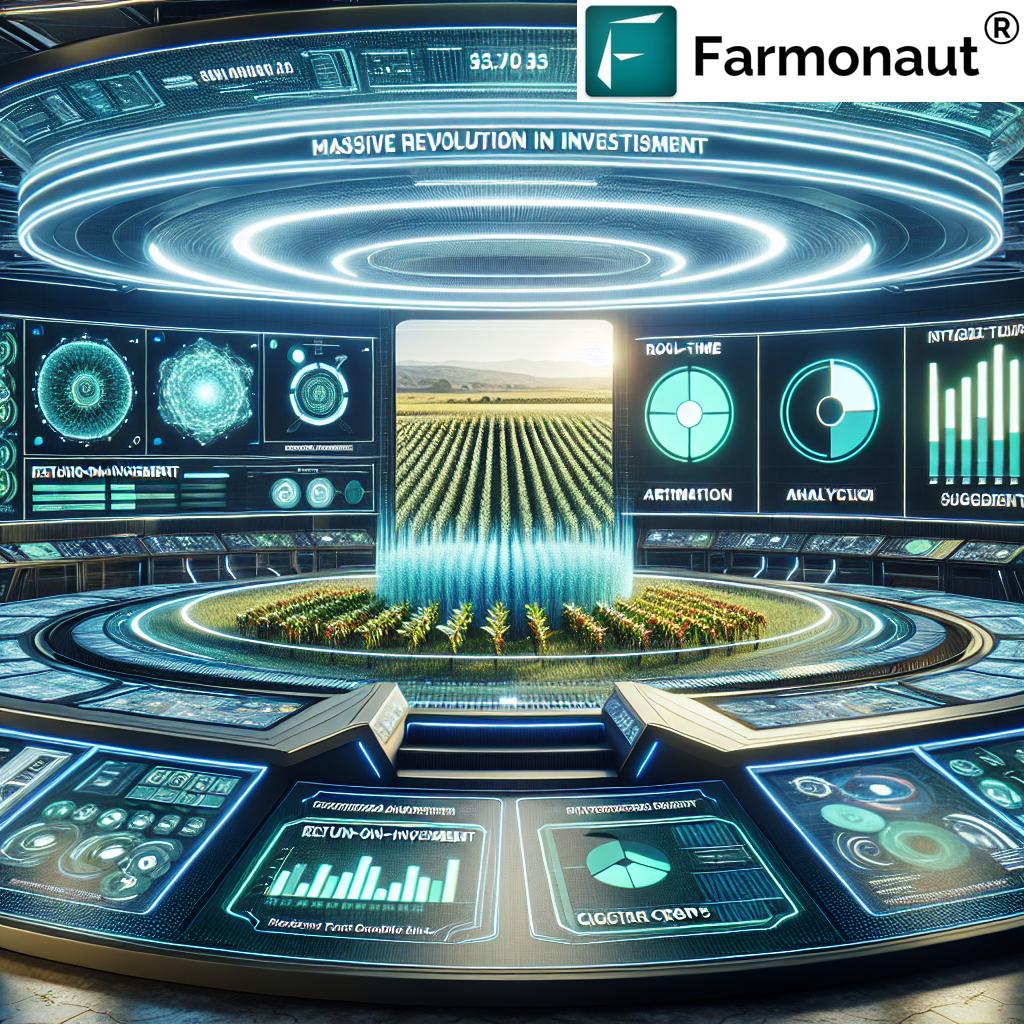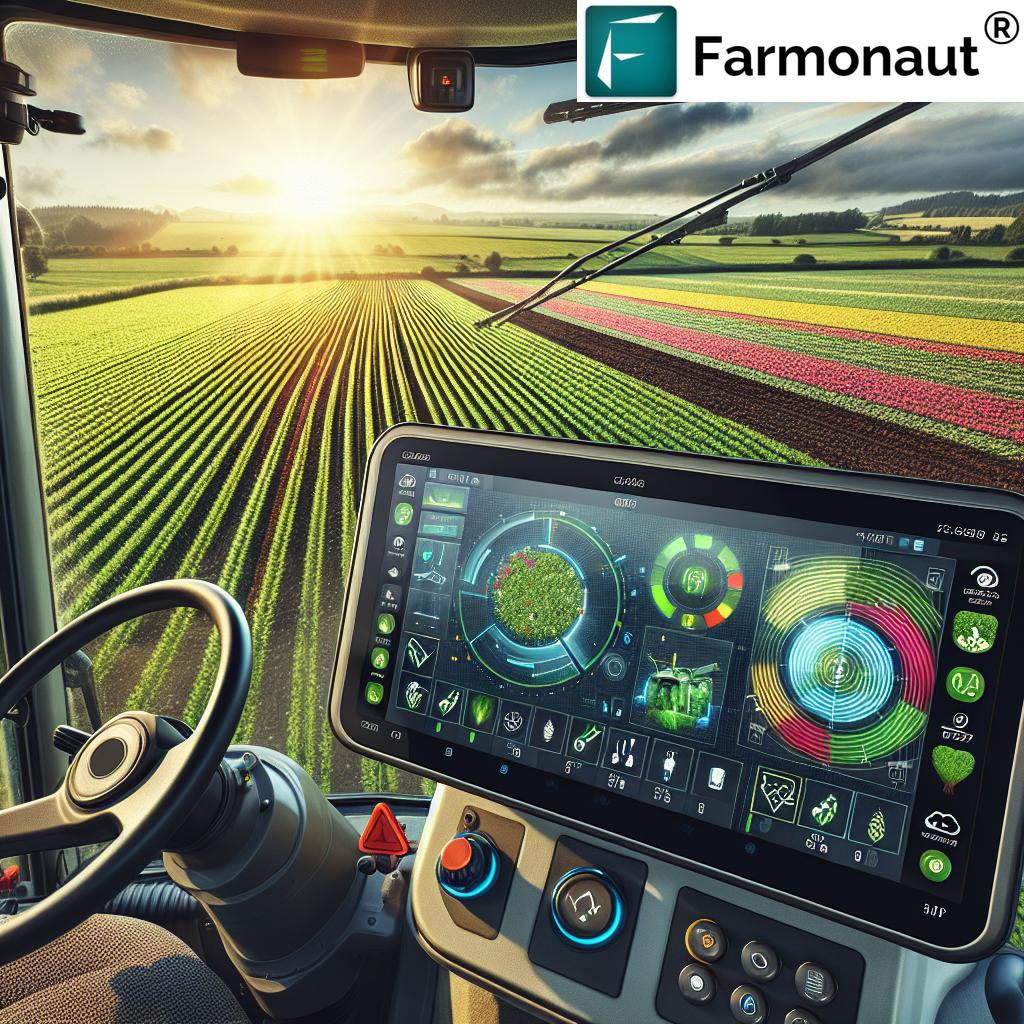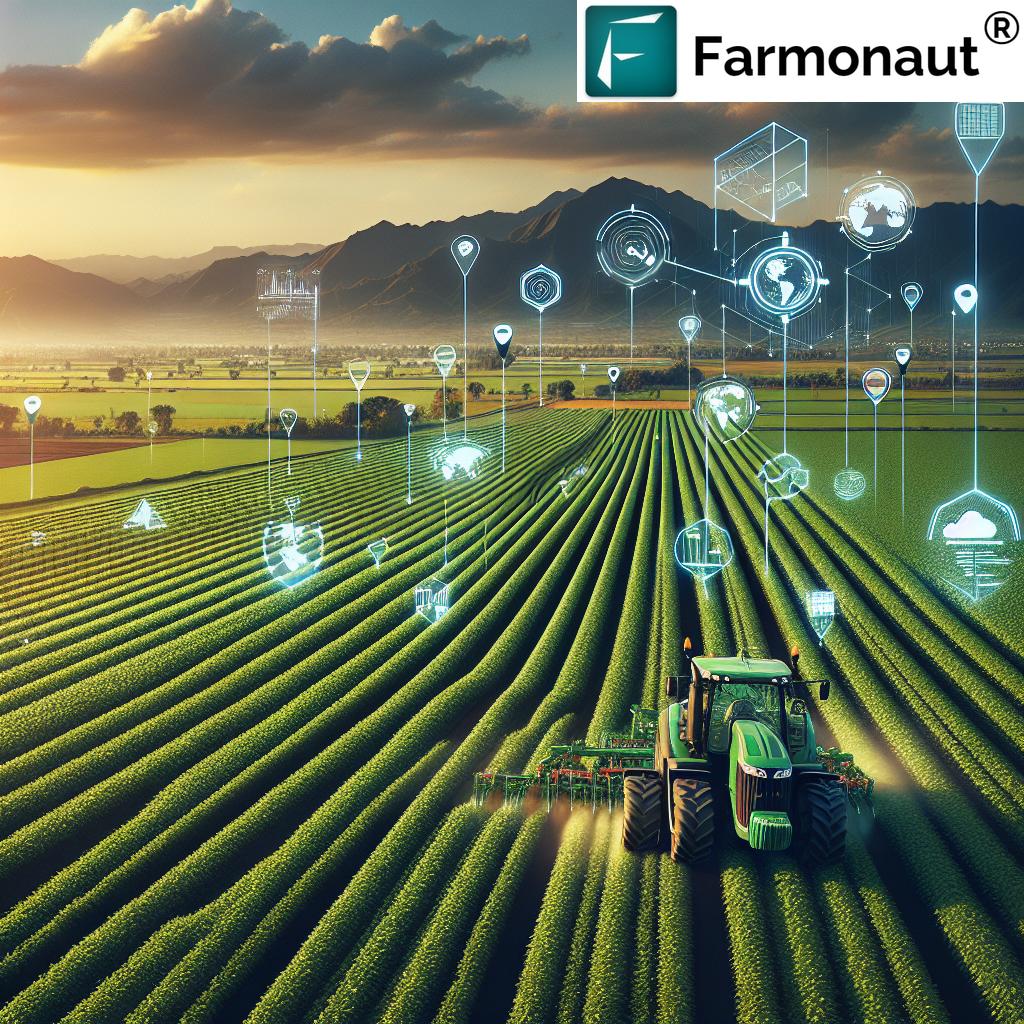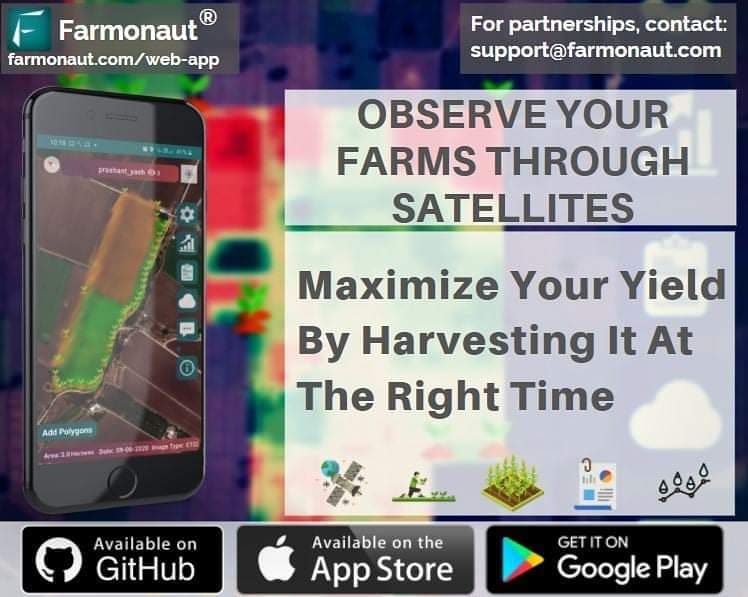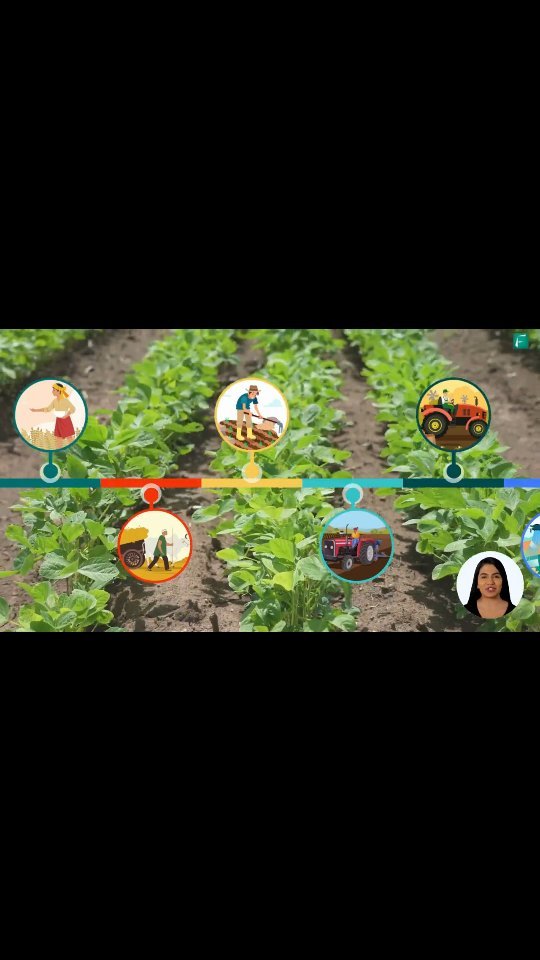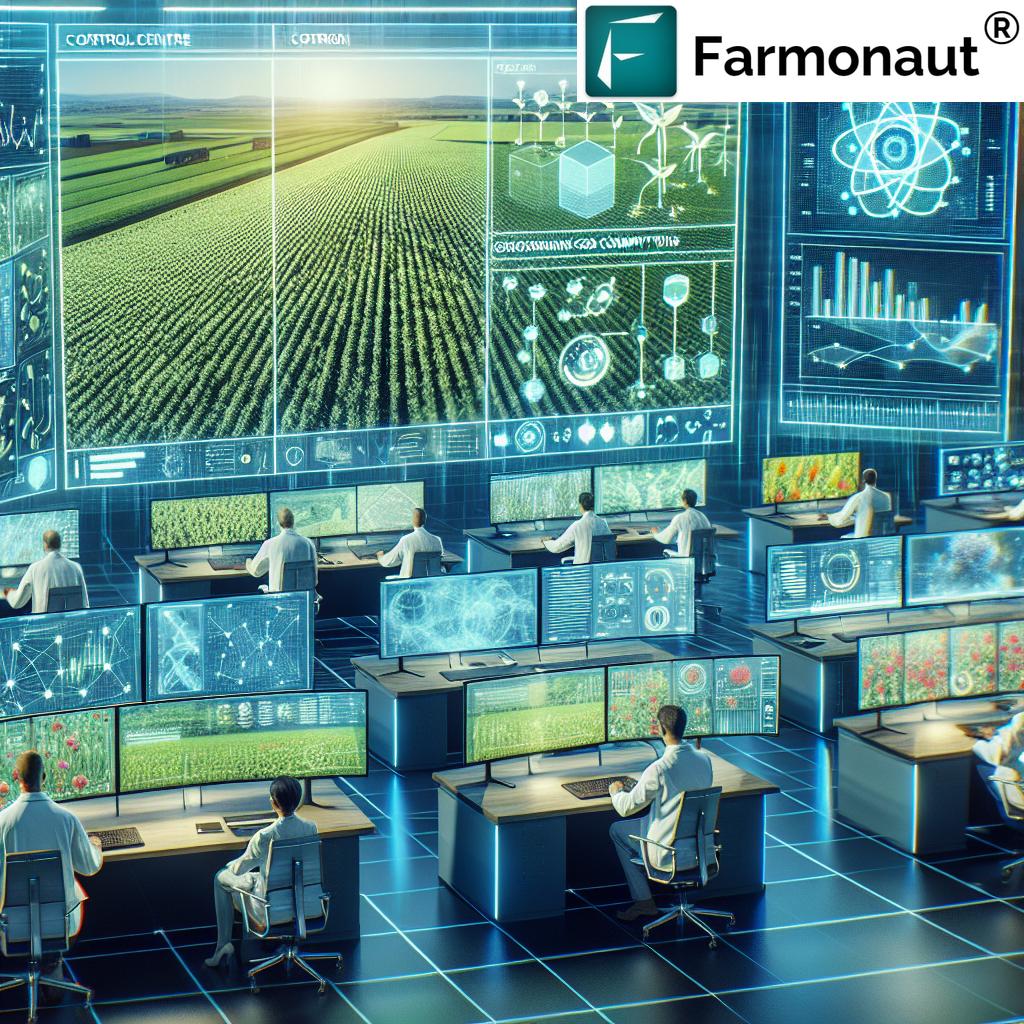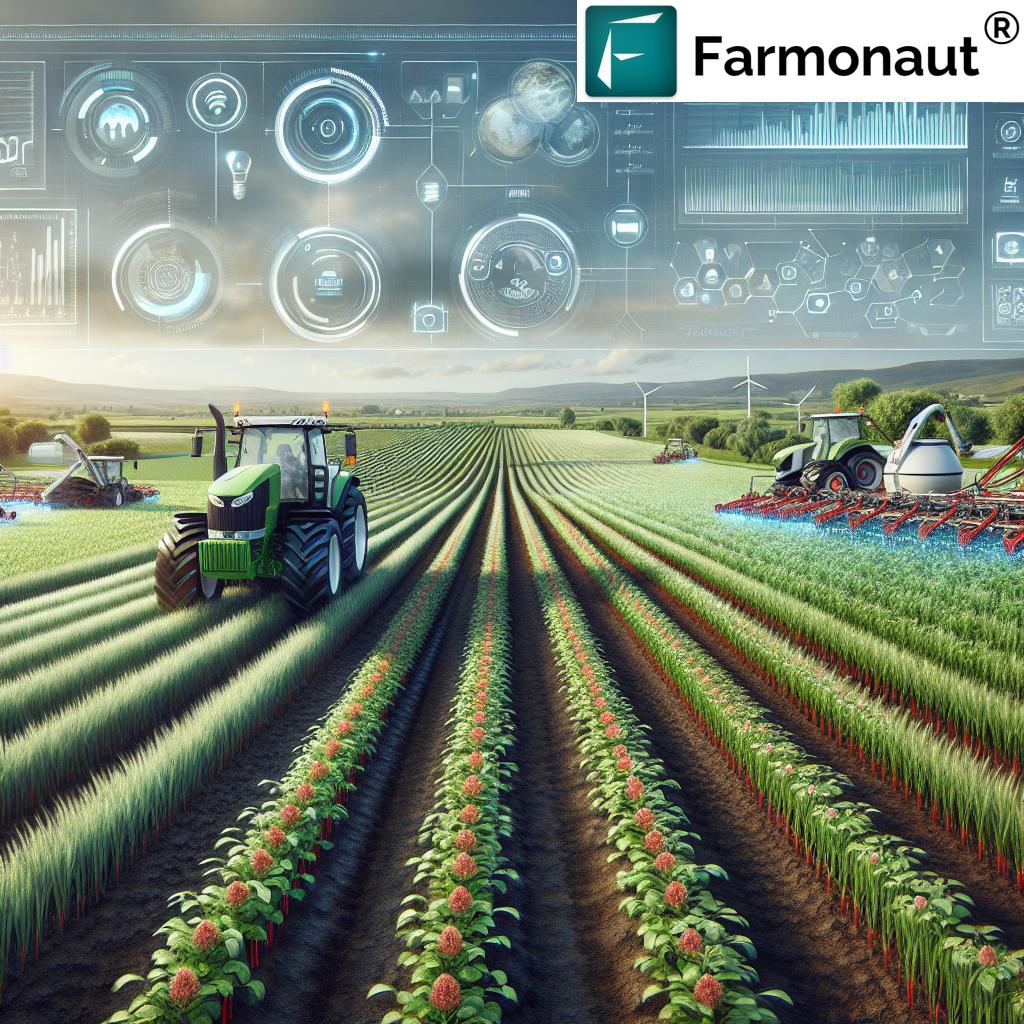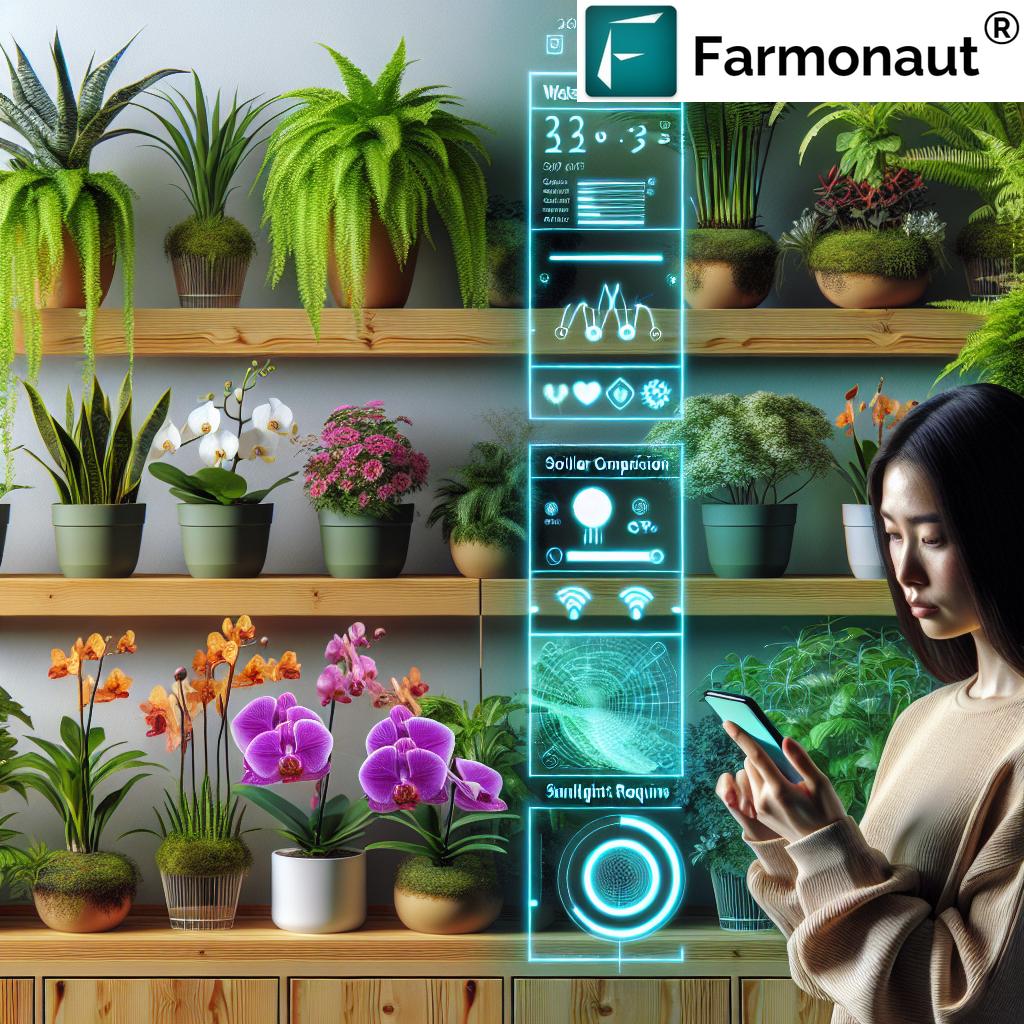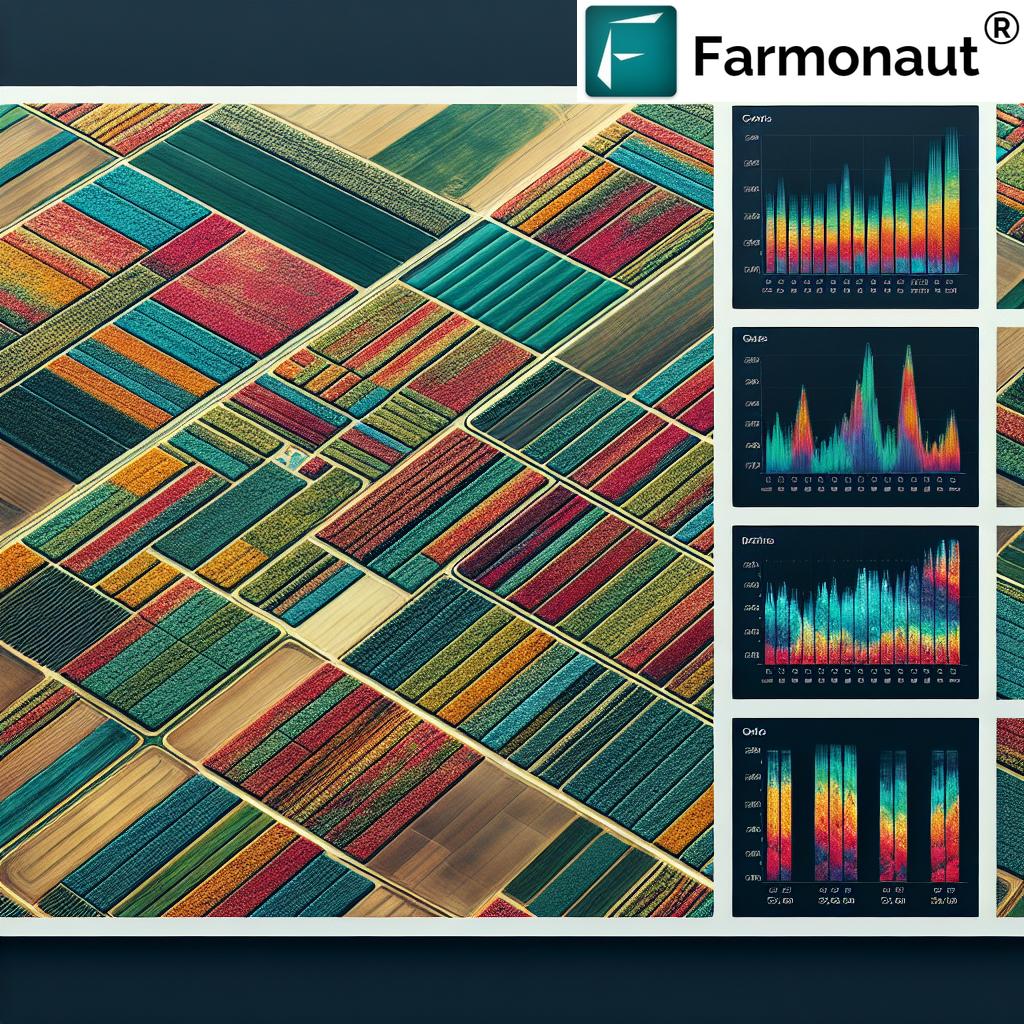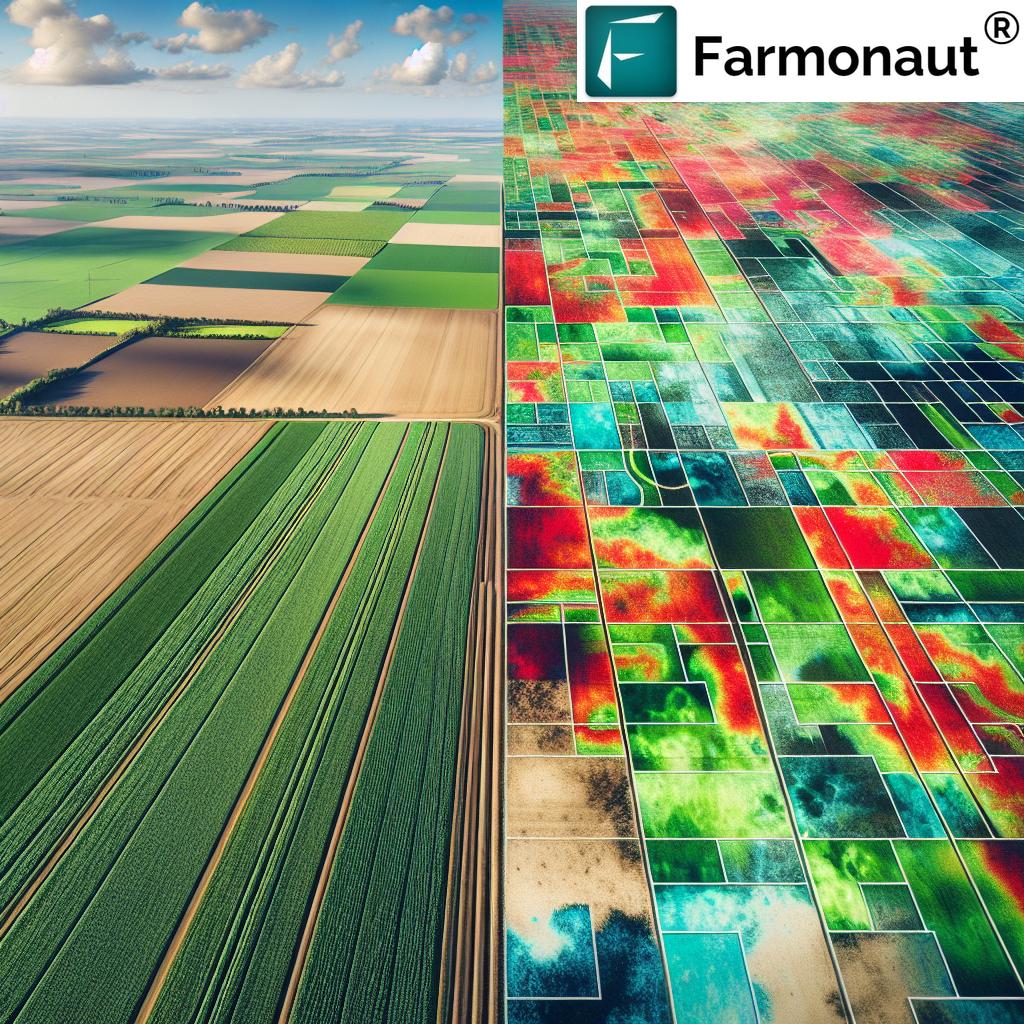Business Opportunities and Technology Use in Farm Traceability: Transforming Agriculture

In today’s rapidly evolving agricultural landscape, farm traceability has emerged as a crucial element in ensuring food safety, sustainability, and consumer trust. As technology continues to advance, new business opportunities are arising, revolutionizing the way we approach agriculture. In this comprehensive blog post, we’ll explore the concept of farm traceability, its importance, and the various technologies that are shaping its future.
Table of Contents
- Introduction to Farm Traceability
- The Importance of Farm Traceability
- Technologies Driving Farm Traceability
- Business Opportunities in Farm Traceability
- Implementing Farm Traceability: Best Practices
- Challenges and Solutions in Farm Traceability
- The Future of Farm Traceability
- Farmonaut’s Role in Farm Traceability
- FAQ
1. Introduction to Farm Traceability
Farm traceability refers to the ability to track and trace the journey of agricultural products from their origin on the farm to the end consumer. This process involves documenting and recording information at every stage of the supply chain, including production, processing, distribution, and retail.
The concept of farm traceability has gained significant importance in recent years due to several factors:
- Increasing consumer demand for transparency in food production
- Stricter regulations on food safety and quality
- Growing concerns about environmental sustainability
- The need for efficient supply chain management
2. The Importance of Farm Traceability
Farm traceability plays a crucial role in modern agriculture for several reasons:
2.1 Food Safety
By enabling the rapid identification and isolation of contaminated products, farm traceability helps prevent foodborne illnesses and facilitates faster, more effective recalls when necessary.
2.2 Consumer Trust
Transparency in the food supply chain builds consumer confidence. When consumers can access information about where their food comes from and how it was produced, they feel more connected to their food and the farmers who grow it.
2.3 Sustainability
Traceability systems can help monitor and improve sustainable farming practices, including the use of chemicals in agriculture, water management, and soil conservation.
2.4 Supply Chain Efficiency
Accurate tracking of products throughout the supply chain can reduce waste, improve inventory management, and optimize logistics.
2.5 Regulatory Compliance
Many countries have implemented strict regulations regarding food traceability. Implementing robust traceability systems helps farms and food businesses comply with these regulations.
3. Technologies Driving Farm Traceability
The advancement of technology has revolutionized farm traceability, making it more accurate, efficient, and cost-effective. Some of the key technologies driving this transformation include:
3.1 Blockchain
Blockchain technology provides a secure, transparent, and immutable ledger for recording and sharing information across the supply chain. It ensures that data cannot be altered or tampered with, increasing trust and accountability.
3.2 Internet of Things (IoT)
IoT devices, such as sensors and RFID tags, can collect and transmit real-time data about crop conditions, storage temperatures, and transportation routes, enhancing traceability and quality control.
3.3 Artificial Intelligence (AI) and Machine Learning
AI and machine learning algorithms can analyze vast amounts of data to identify patterns, predict potential issues, and optimize supply chain processes.
3.4 Satellite Imaging and Remote Sensing
Satellite technology, like that employed by Farmonaut, provides valuable insights into crop health, soil conditions, and weather patterns, contributing to more precise and sustainable farming practices.
3.5 Mobile Applications
Mobile apps enable farmers, distributors, and consumers to access and input traceability information easily. For instance, the Farmonaut Android app and iOS app provide farmers with real-time insights and traceability tools.
4. Business Opportunities in Farm Traceability
The growing importance of farm traceability has created numerous business opportunities across the agricultural sector:
4.1 Traceability Software and Platforms
Development of specialized software solutions for managing and analyzing traceability data throughout the supply chain.
4.2 IoT Device Manufacturing
Production of sensors, RFID tags, and other IoT devices specifically designed for agricultural use.
4.3 Data Analytics Services
Offering advanced analytics and insights based on traceability data to help farms and food businesses optimize their operations.
4.4 Blockchain Solutions
Creating blockchain-based platforms tailored for agricultural traceability and supply chain management.
4.5 Certification and Auditing Services
Providing third-party verification and certification of traceability systems to ensure compliance with regulations and industry standards.
4.6 Consumer-Facing Applications
Developing apps that allow consumers to access detailed information about the origin and journey of their food products.
5. Implementing Farm Traceability: Best Practices
To successfully implement farm traceability, consider the following best practices:
5.1 Start with Clear Objectives
Define your goals for implementing traceability, whether it’s improving food safety, enhancing sustainability, or meeting regulatory requirements.
5.2 Choose the Right Technology
Select traceability solutions that align with your farm’s size, budget, and specific needs. Consider platforms like Farmonaut that offer comprehensive smart farming and traceability tools.
5.3 Train Your Team
Ensure that all staff members understand the importance of traceability and are trained in using the chosen systems and technologies.
5.4 Standardize Data Collection
Establish consistent protocols for collecting and recording traceability data across all stages of production and distribution.
5.5 Integrate with Existing Systems
Where possible, integrate traceability solutions with your existing farm management and ERP systems for seamless data flow.
5.6 Regular Audits and Updates
Conduct regular audits of your traceability system and update it as needed to ensure continued effectiveness and compliance.
6. Challenges and Solutions in Farm Traceability
While farm traceability offers numerous benefits, it also presents certain challenges:
6.1 Cost of Implementation
Challenge: The initial cost of implementing traceability systems can be high, especially for small farms.
Solution: Look for scalable solutions like Farmonaut that offer affordable options for farms of all sizes. Consider the long-term benefits and potential cost savings when evaluating the investment.
6.2 Technological Complexity
Challenge: Some farmers may find new technologies intimidating or difficult to use.
Solution: Choose user-friendly platforms and provide thorough training. Utilize solutions like Farmonaut that offer intuitive interfaces and comprehensive support.
6.3 Data Privacy and Security
Challenge: Concerns about the security of sensitive farm data and personal information.
Solution: Implement robust data security measures and choose traceability solutions that prioritize data protection and comply with relevant regulations.
6.4 Interoperability
Challenge: Ensuring that different traceability systems can communicate and share data effectively across the supply chain.
Solution: Advocate for industry-wide standards and choose solutions that offer open APIs for integration. Farmonaut, for example, provides a comprehensive API for developers.
6.5 Resistance to Change
Challenge: Overcoming resistance from farmers or staff who are accustomed to traditional methods.
Solution: Communicate the benefits of traceability clearly, provide ongoing support, and showcase success stories from early adopters.
7. The Future of Farm Traceability
As technology continues to evolve, the future of farm traceability looks promising:
7.1 Enhanced Precision Agriculture
Integration of traceability with precision agriculture techniques will allow for more targeted and efficient farming practices.
7.2 Increased Automation
Automation of data collection and analysis will reduce human error and improve the accuracy of traceability systems.
7.3 Blockchain Adoption
Wider adoption of blockchain technology will enhance transparency and trust across the entire agricultural supply chain.
7.4 Consumer Empowerment
Advanced mobile apps and QR codes will give consumers unprecedented access to detailed information about their food’s journey from farm to table.
7.5 Regulatory Integration
Traceability systems will become more closely integrated with regulatory frameworks, streamlining compliance and reporting processes.
8. Farmonaut’s Role in Farm Traceability
At Farmonaut, we’re committed to revolutionizing agriculture through innovative technology and data-driven insights. Our platform offers a comprehensive solution for farm traceability and smart farming:
- Satellite-Based Crop Health Monitoring: Real-time insights into vegetation health, soil moisture, and other critical metrics.
- AI-Powered Advisory System: Personalized recommendations for crop management and resource optimization.
- Blockchain-Based Traceability: Secure and transparent tracking of agricultural products from farm to consumer.
- Fleet and Resource Management: Tools for efficient management of agricultural machinery and resources.
- Carbon Footprint Tracking: Monitor and reduce environmental impact for sustainable farming practices.
Our solutions cater to individual farmers, agribusinesses, government agencies, and financial institutions, providing scalable and affordable options for implementing farm traceability and precision agriculture.
Farmonaut Satellite System vs. Drone and IoT-based Farm Monitoring
| Feature | Farmonaut Satellite System | Drone-based Monitoring | IoT-based Monitoring |
|---|---|---|---|
| Coverage Area | Large scale (global) | Limited (local) | Limited (local) |
| Cost-effectiveness | High | Medium | Low |
| Data Frequency | Regular updates (varies by plan) | On-demand | Continuous |
| Ease of Implementation | Easy (no on-site equipment required) | Moderate (requires skilled operators) | Complex (requires sensor installation) |
| Weather Independence | High | Low | Moderate |
| Data Integration | Comprehensive (weather, soil, crop health) | Limited | Moderate |
To experience the benefits of Farmonaut’s traceability and smart farming solutions, sign up for our platform today.
9. FAQ
Q1: What is farm traceability?
A1: Farm traceability is the ability to track and trace agricultural products from their origin on the farm through all stages of production, processing, and distribution to the end consumer.
Q2: Why is farm traceability important?
A2: Farm traceability is crucial for ensuring food safety, building consumer trust, promoting sustainability, improving supply chain efficiency, and meeting regulatory requirements.
Q3: How does technology enhance farm traceability?
A3: Technologies like blockchain, IoT, AI, and satellite imaging improve the accuracy, efficiency, and cost-effectiveness of traceability systems, enabling real-time monitoring and data analysis.
Q4: What business opportunities exist in farm traceability?
A4: Opportunities include developing traceability software, manufacturing IoT devices, offering data analytics services, creating blockchain solutions, and providing certification services.
Q5: How can farmers implement traceability systems?
A5: Farmers can implement traceability by setting clear objectives, choosing appropriate technology, training staff, standardizing data collection, integrating with existing systems, and conducting regular audits.
Q6: What challenges are associated with farm traceability?
A6: Challenges include the cost of implementation, technological complexity, data privacy concerns, interoperability issues, and resistance to change.
Q7: How does Farmonaut contribute to farm traceability?
A7: Farmonaut offers a comprehensive platform for farm traceability, including satellite-based crop monitoring, AI-powered advisory systems, blockchain-based traceability, and resource management tools.
Q8: How does satellite-based monitoring compare to drone and IoT-based systems?
A8: Satellite-based systems like Farmonaut offer larger coverage areas, greater cost-effectiveness, and easier implementation compared to drone and IoT-based systems, while providing comprehensive data integration.
Q9: Can small farms benefit from traceability systems?
A9: Yes, small farms can benefit from scalable and affordable traceability solutions like Farmonaut, which offer improved efficiency, market access, and compliance with regulations.
Q10: How will farm traceability evolve in the future?
A10: The future of farm traceability will likely include enhanced precision agriculture, increased automation, wider blockchain adoption, greater consumer empowerment, and closer integration with regulatory frameworks.
Implementing farm traceability is a crucial step towards a more transparent, efficient, and sustainable agricultural industry. By leveraging advanced technologies and partnering with innovative platforms like Farmonaut, farmers and agribusinesses can not only meet regulatory requirements but also gain a competitive edge in the market.
Ready to transform your farming practices with cutting-edge traceability solutions? Subscribe to Farmonaut today:
For more information on our API and developer resources, visit our API documentation.
Together, we can build a more sustainable and transparent future for agriculture. Happy farming!


